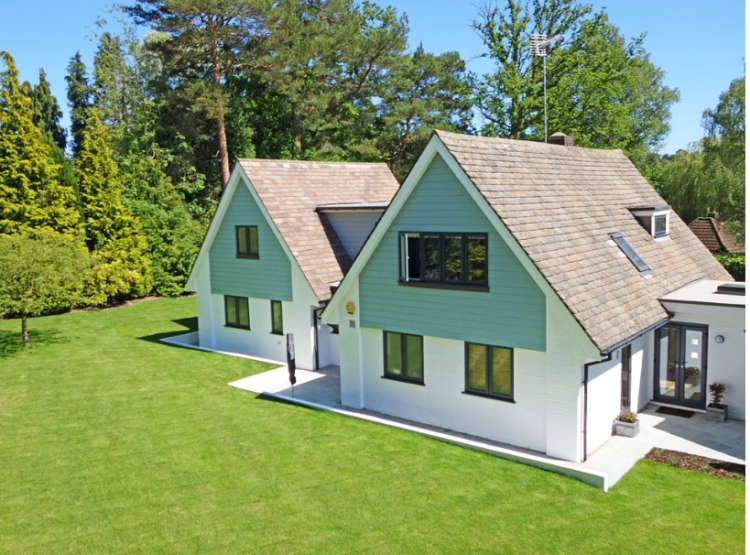In today’s world, where environmental concerns are at the forefront of global discussions, making your home more energy-efficient is not only beneficial for the planet but also for your wallet. By implementing energy-efficient upgrades, you can reduce your carbon footprint and lower your utility bills. In this article, we’ll explore various strategies for enhancing your home’s sustainability through energy-efficient upgrades.
Assessment of Current Energy Usage
Before diving into energy-efficient upgrades, it’s essential to assess your home’s current energy usage. Consider conducting an energy audit to identify areas of inefficiency and prioritize upgrades accordingly. This may involve inspecting insulation levels, checking for air leaks, and evaluating the efficiency of appliances and lighting fixtures.
Upgrading Insulation and Sealing Air Leaks
One of the most effective ways to improve energy efficiency is by upgrading insulation and sealing air leaks in your home. Proper insulation helps maintain a consistent indoor temperature and reduces the workload on heating and cooling systems. Additionally, sealing air leaks prevents conditioned air from escaping and prevents drafts, resulting in lower energy bills and increased comfort.
Installing Energy-Efficient Windows and Doors
Windows and doors are common areas of energy loss in homes. By installing energy-efficient windows and doors, you can reduce heat transfer and improve insulation. Look for features such as double or triple glazing, low-emissivity coatings, and insulated frames to maximize energy savings.
Upgrading to Energy-Efficient Appliances
Household appliances account for a significant portion of energy consumption in most homes. Consider upgrading to ENERGY STAR rated appliances, which are designed to use less energy without sacrificing performance. From refrigerators and dishwashers to washing machines and HVAC systems, there are energy-efficient options available for every aspect of your home.
Switching to LED Lighting
Another simple yet effective energy-efficient upgrade is switching to LED lighting. LED bulbs consume less energy and last longer than traditional incandescent bulbs, making them a cost-effective and eco-friendly lighting solution. Retrofitting existing fixtures with LED bulbs is a straightforward way to reduce energy consumption and lower utility bills.
Implementing Smart Thermostat Systems
Smart thermostats offer advanced features that help optimize energy usage and reduce waste. By programming heating and cooling schedules based on your daily routines and preferences, smart thermostats can lower energy bills while maintaining comfort levels. Some models even offer remote access and energy usage tracking for added convenience and insight.
Exploring Renewable Energy Options
For homeowners looking to further reduce their carbon footprint, renewable energy options such as solar panels and geothermal heating and cooling systems offer sustainable solutions. Solar panels harness the power of the sun to generate electricity, while geothermal systems utilize the earth’s natural heat to provide heating and cooling for your home.
Investigating Water Conservation Techniques
In addition to reducing energy consumption, it’s essential to consider water conservation techniques to enhance overall sustainability. Installing low-flow fixtures and appliances, such as faucets, showerheads, and toilets, can significantly reduce water usage without sacrificing performance. Additionally, rainwater harvesting systems can capture and store rainwater for use in irrigation and other non-potable applications.
Calculating Return on Investment
When considering energy-efficient upgrades for your home, it’s essential to weigh the upfront costs against the long-term savings. Calculate the return on investment (ROI) for each upgrade by estimating the cost savings in energy bills over time. Factor in incentives, rebates, and tax credits available for energy-efficient home improvements to maximize your ROI.
Overcoming Common Challenges
While energy-efficient upgrades offer numerous benefits, they may also present challenges such as budget constraints, ROI considerations, and logistical issues. Take time to research and plan your upgrades carefully, considering factors such as upfront costs, potential savings, and implementation timelines. Don’t hesitate to seek guidance from energy professionals or contractors to overcome any obstacles you may encounter.
Monitoring and Maintaining Energy Efficiency
Once you’ve implemented energy-efficient upgrades in your home, it’s essential to monitor and maintain their performance over time. Regular maintenance, such as cleaning air filters, checking insulation, and calibrating thermostats, can help ensure optimal energy efficiency and prolong the lifespan of your upgrades. Additionally, monitor your energy usage and make adjustments as needed to maximize savings and minimize waste.
Educating Others on Sustainable Practices
Finally, consider sharing your knowledge and experiences with friends, family, and neighbors to promote sustainability in your community. By educating others on the benefits of energy-efficient upgrades and sharing tips for reducing energy consumption, you can inspire positive change and contribute to a more sustainable future for all.
Conclusion
In conclusion, enhancing your home’s sustainability through energy-efficient upgrades is not only good for the environment but also for your finances and overall quality of life. By assessing your home’s current energy usage, prioritizing upgrades, and implementing sustainable practices, you can reduce your carbon footprint, lower your utility bills, and create a more comfortable and eco-friendly living space. So why wait? Start exploring energy-efficient upgrades for your home today and take the first step towards a greener future.

FAQs:
- How much money can I save by making my home more energy-efficient?The amount of money you can save by making your home more energy-efficient depends on factors such as the size of your home, your current energy usage, and the upgrades you implement. On average, homeowners can save hundreds or even thousands of dollars per year on energy bills by upgrading to energy-efficient appliances, improving insulation, and implementing other energy-saving measures.
- Are there any tax incentives or rebates available for energy-efficient upgrades?Yes, many governments offer tax incentives, rebates, and other financial incentives for energy-efficient home upgrades. These incentives vary by location and may include tax credits, rebates on energy-efficient appliances, and incentives for renewable energy installations such as solar panels. Be sure to research available incentives in your area and take advantage of any programs that apply to your situation.
- How long does it take to recoup the cost of energy-efficient upgrades?The payback period for energy-efficient upgrades varies depending on factors such as the upfront cost of the upgrades, the amount of money saved on energy bills, and the availability of incentives and rebates. In many cases, homeowners can recoup the cost of energy-efficient upgrades within a few years through savings on energy bills. Additionally, some upgrades may qualify for incentives or rebates that further reduce the payback period.
- What are some common misconceptions about energy-efficient upgrades?One common misconception about energy-efficient upgrades is that they are expensive and not worth the investment. In reality, many energy-efficient upgrades offer significant long-term savings on energy bills and can pay for themselves over time. Another misconception is that energy-efficient upgrades require sacrificing comfort or convenience. However, modern energy-efficient technologies are designed to deliver the same level of performance and comfort as traditional options while reducing energy consumption and environmental impact.
- How can I get started with energy-efficient upgrades for my home?Getting started with energy-efficient upgrades for your home is easy. Begin by conducting an energy audit to assess your home’s current energy usage and identify areas for improvement. Then, prioritize upgrades based on factors such as cost savings, ROI, and environmental impact. Consider consulting with energy professionals or contractors for personalized recommendations and assistance with implementation.






